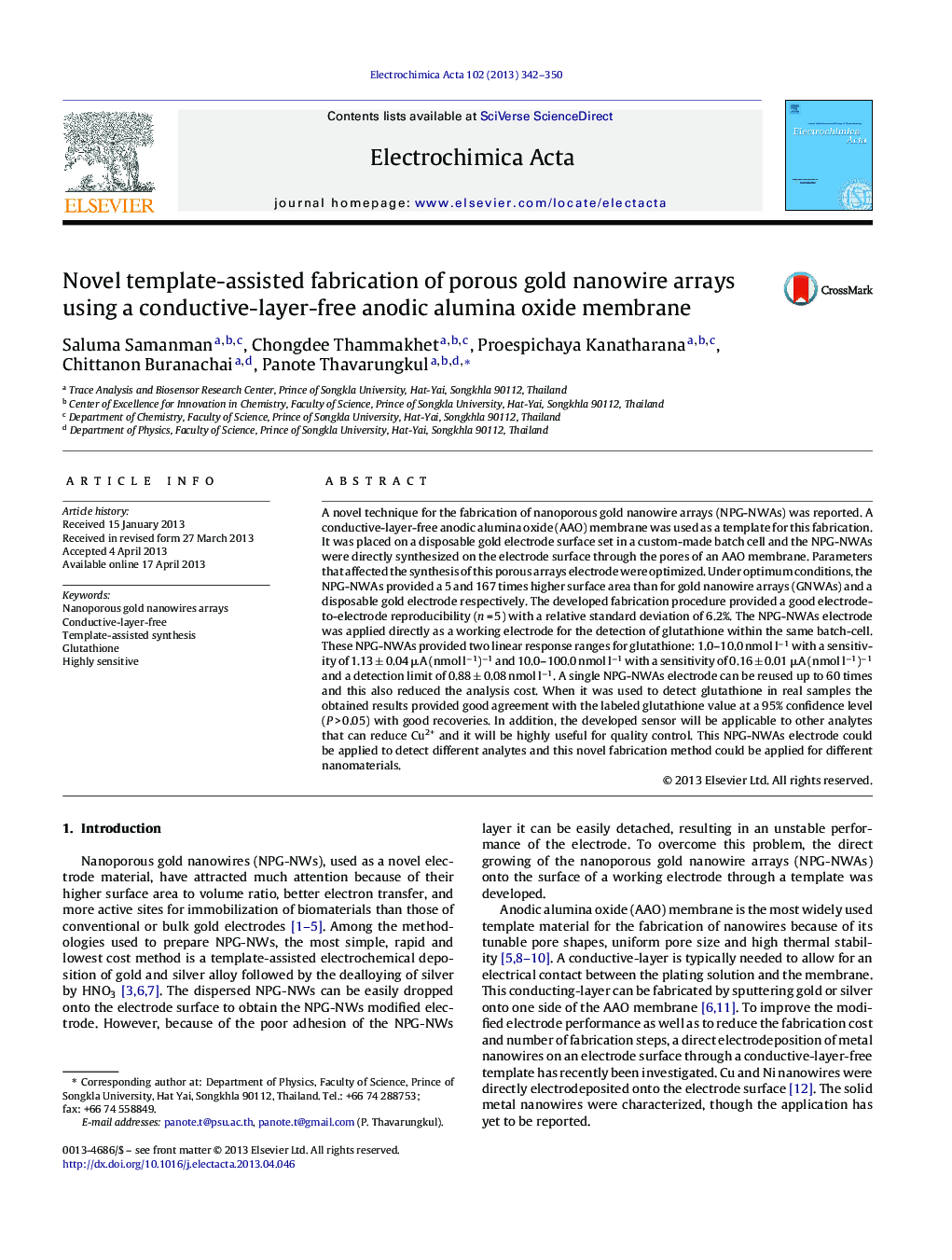| Article ID | Journal | Published Year | Pages | File Type |
|---|---|---|---|---|
| 187292 | Electrochimica Acta | 2013 | 9 Pages |
•Nanoporous gold nanowire arrays (NPG-NWAs) were directly grown onto the surface of an electrode.•Conductive-layer-free AAO membrane template was employed in a custom-made batch cell.•NPG-NWAs gave a 3 and 167 times higher surface area than gold nanowire arrays and bare gold electrode.•NPG-NWAs were applied as a working electrode for glutathione detection within the same-batch cell.•Electrochemical detection of glutathione agreed well with the labeled glutathione value (P > 0.05).
A novel technique for the fabrication of nanoporous gold nanowire arrays (NPG-NWAs) was reported. A conductive-layer-free anodic alumina oxide (AAO) membrane was used as a template for this fabrication. It was placed on a disposable gold electrode surface set in a custom-made batch cell and the NPG-NWAs were directly synthesized on the electrode surface through the pores of an AAO membrane. Parameters that affected the synthesis of this porous arrays electrode were optimized. Under optimum conditions, the NPG-NWAs provided a 5 and 167 times higher surface area than for gold nanowire arrays (GNWAs) and a disposable gold electrode respectively. The developed fabrication procedure provided a good electrode-to-electrode reproducibility (n = 5) with a relative standard deviation of 6.2%. The NPG-NWAs electrode was applied directly as a working electrode for the detection of glutathione within the same batch-cell. These NPG-NWAs provided two linear response ranges for glutathione: 1.0–10.0 nmol l−1 with a sensitivity of 1.13 ± 0.04 μA (nmol l−1)−1 and 10.0–100.0 nmol l−1 with a sensitivity of 0.16 ± 0.01 μA (nmol l−1)−1 and a detection limit of 0.88 ± 0.08 nmol l−1. A single NPG-NWAs electrode can be reused up to 60 times and this also reduced the analysis cost. When it was used to detect glutathione in real samples the obtained results provided good agreement with the labeled glutathione value at a 95% confidence level (P > 0.05) with good recoveries. In addition, the developed sensor will be applicable to other analytes that can reduce Cu2+ and it will be highly useful for quality control. This NPG-NWAs electrode could be applied to detect different analytes and this novel fabrication method could be applied for different nanomaterials.
